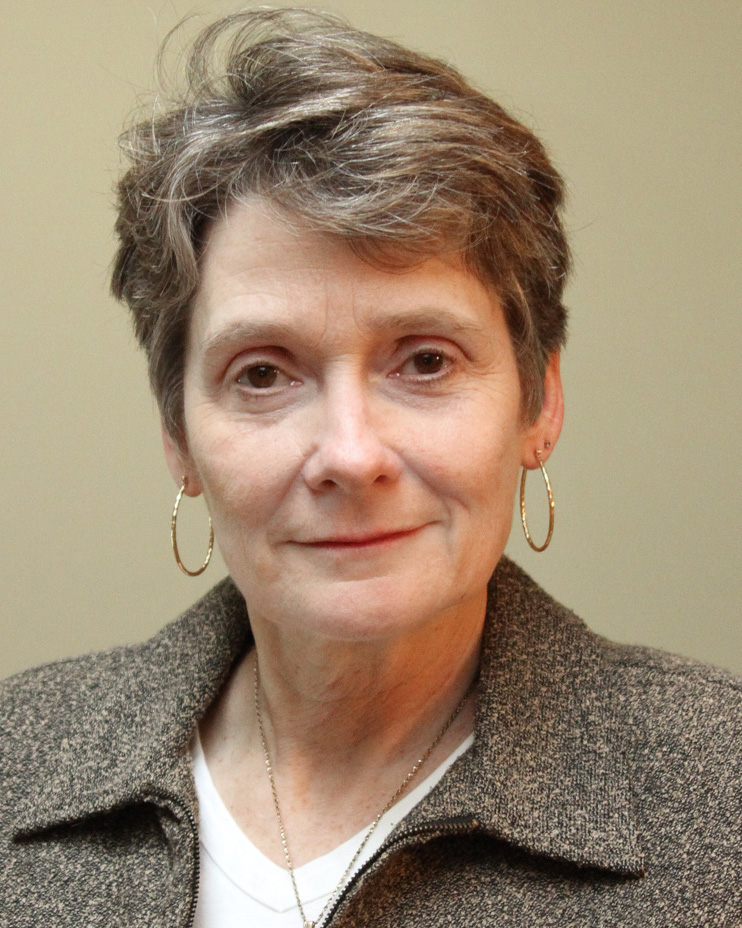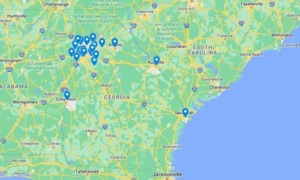
Supawadee56/Shutterstock
.
Those of us who work to increase opportunities for children and families regularly seek new and different methods that will let us be more effective. For the past 28 years, a cross-section of partners in Georgia have been applying a unique approach that allows us to innovate and evolve with the times while remaining steadfast in our core values and with existing practices that have proven successful.
Through a multitiered system of collaboration, we’ve been able to improve a wide range of conditions for our fellow Georgians. Our statewide collaboration was created — and is maintained — with strategic intent, and is structured so that each of Georgia’s 159 counties has a dedicated mechanism to achieve statewide collective impact at the local, regional and state levels.

Rebekah Hudgins
This group of local collaboratives — the Georgia Family Connection network — is supported at the state and regional levels by the Georgia Family Connection Partnership (GaFCP). GaFCP convenes and connects regional, state and national partners around issues that affect families and children. It provides data, research and evaluation on both family and child-related issues and on collaborative techniques and best practices for achieving outcomes.
Importantly, this strategic collaboration did not happen by chance, but through committed, ongoing support and investment by Georgia’s public and philanthropic sectors.
In 1990, the Annie E. Casey Foundation published the first-ever KIDS COUNT report, “a national and state-by-state effort to track the well-being of children in the United States.” Georgia fared dismally, ranking 48th in the nation. Upon examination, then-Gov. Zell Miller found that youth and social service organizations throughout the state were working hard, but they were detached from one another. Agencies were not communicating and were serving the same families without coordination, or even an awareness of each other’s involvement.
In response, Miller created a two-year pilot initiative in 1991 called Georgia Family Connection. The initiative streamlined services for the physical, educational, social and economic well-being of Georgia’s most vulnerable citizens through collaboration at the local level. From that foundation, Family Connection grew into a statewide network by 2002.
Each community’s collaborative organization is unique, but each shares a common vision for Georgia: that all children are healthy, primed for school and can succeed when they get there; and that stable, self-sufficient families can contribute to thriving communities. Every Family Connection Collaborative seeks to achieve this vision by reviewing their local data, and — with the community’s buy-in and assistance — developing and implementing an annual community plan that addresses their highest priorities.
Leveraging the Model
One of the ways GaFCP leverages the collaborative model beyond county borders is to connect communities with similar strategies to one another and to state-level initiatives and resources to build multicollaborative strategies.
We began what we call our cohort work by identifying three key indicators — low-birthweight births, childhood obesity and children not reading on grade level by third grade — to address on a larger scale. Recognizing the impact these pressing issues have on the state’s overall well-being, GaFCP helped cohorts of counties with high rates of those indicators to develop, implement and evaluate strategies to improve their rates.
With help from state, community and investment partners, GaFCP now provides technical, financial and networking support to 17 collaborative organizations. Each collaborative works independently and with their cohort peers to strategize, identify resources and develop programs, services and activities to change the chosen indicator in their counties — and to evaluate their progress.
Working together, the collaboratives in each cohort share research, challenges and successes in their own counties so that their cohort peers — and peers and partners across the Family Connection network — can learn from their experiences.
Low Birthweight
Launched in 2010 with four rural counties, low birthweight prevention was GaFCP’s first cohort initiative. In 2016, one more county joined the cohort. These five counties work within their own communities and together to improve women’s health and birth outcomes.
Georgia’s low-birthweight rate is among the worst in the nation. So there’s much work to be done, including improving women’s health care, increasing community awareness and education about risks, and providing access to adequate prenatal care.
With funding from the Healthcare Georgia Foundation and Kaiser Permanente, along with participation from state and community partners, GaFCP published a research compendium, “Improving Infant Health: Addressing Low Birthweight in Georgia,” to guide the collaboratives in addressing this complex issue. An update of the compendium, published in 2017, includes the latest Georgia data, research and best and promising practices.
Because of the strides being made through the Low Birthweight Prevention Cohort work, GaFCP announced the creation of initiatives to address childhood obesity and grade-level reading in 2013.
Reading proficiently by the end of third grade can be a life-changing benchmark in a child’s development. Students with low literacy tend to have more behavioral and social problems in subsequent grades and higher rates of retention. With more than 65 percent of Georgia’s students moving to the fourth grade without proficient reading skills, improving literacy in counties where reading trends are worse than the state average is crucial.
Childhood obesity
We know that child health is inextricably linked to school success. So childhood obesity is a key issue for Georgia’s children and a financial threat to our state, as we spend $2.4 billion annually on treating obesity-related illnesses. Furthermore, childhood obesity is a national issue since, for the first time in our nation’s history, children are expected to live shorter lives than their parents due to the consequences of obesity.
With funding from the Annie E. Casey and Blank Family Foundations, six counties were invited to join either the Early Learning or the Childhood Obesity Prevention Cohort. Each launched local strategies to improve their respective issue. Through implementation it became obvious that many supports across the cohorts were similar. As a result, the cohorts merged to form the Early Childhood Health and Education Cohort (EC-HEED).
In 2016, the Foundations continued their investment, and six more counties were invited to join the original six to form the EC-HEED Cohort. The 12 counties developed strategies that include attention to healthy eating and nutrition, exercise, reading, storytelling and positive adult-child interactions. Their strategies are aligned with Georgia’s statewide third-grade reading campaign and the Institute of Medicine’s five essential areas that need to be improved to reduce obesity.
We know that third graders who are not reading on grade level are far less likely to graduate from high school on time. And, research shows that many low-birthweight children are born preterm. Children born preterm have lower school performance, illustrating the intersection of these indicators. With support from our state and local partners, the EC-HEED Cohort strives to get children back in shape and reading proficiently by the end of third grade.
Ultimately, by maximizing collaborative efforts at every level — helping local communities set priorities and employ sound strategies, applying our model to go deep in a few communities to learn more about improving key indicators, and connecting and sharing all of that work to inform state-level decisions and initiatives — we’re amplifying the efforts of everyone working to improve the lives of children and families, we’re helping communities across our state to thrive, and we’re helping improve the health, productivity and prospects of all Georgians.
Rebekah Hudgins is an anthropologist/epidemiologist and director of AnthroEval Consulting, LLC. She has worked with the Georgia Department of Public Health, Centers for Disease Control and Prevention, universities and nonprofits in surveillance, ethnographic research including extensive home visits in Jamaica, and drug studies in Jamaica and the United States; all with a focus on community building and child and family well-being.































